There is nothing better than a homemade pie, made with homemade phyllo dough! Phyllo or filo pastry, which means leaf or sheet in Greek, refers to the pastry that is wrapped around savoury and sweet pies and comes in many regional variations!
Filo pastry (phyllo dough) is notoriously difficult to make at home, with only the very best cooks attempting to make their own and the rest simply buying a ready-made version. Well, not any more!
But as you know there is nothing better than homemade and to make sure you succeed on your very first attempt I have put together my favourite Greek rustic filo recipe, my tips and tricks and recipe suggestions to make the perfect savoury pie! So let’s get started!
What is a Greek Phyllo Dough?
Greek Phyllo dough, also called “village phyllo” is a rustic savoury pastry dough that is traditionally used in all kinds of Greek savoury pastries!
It was invented in the olden days, before the age of commercial phyllo doughs and was particularly popular in the small towns and villages all around Greece – hence its unofficial name – village dough.
What flour is the best suited to making Phyllo (filo) dough?
To make the perfect filo dough you’ll need to get yourself some strong white bread flour. The high gluten (protein) content is an absolute must as it allows your phyllo to be stretched out thin and, when baked, crusty and crunchy!
Using a softer flour, like cake flour, will result in a more tender dough which when baked will become more crumbly, almost like shortcrust pastry.
How to make your phyllo pastry
The secret behind a crusty and crunchy phyllo is in its preparation. To make your phyllo you’ll need to:
- Pour your ingredients in a stand mixer
- Knead it till the dough ball is smooth, taught and elastic
- Let it rest for as long as you can and a minimum of 60 minutes
- Roll it out as thin as you can
- Sprinkle it with plenty of olive oil when laying out your pie
Preparing your phyllo dough
To prepare your phyllo dough, start by adding the flour, the salt, the olive oil and the vinegar in your stand mixer bowl. Mix it for 10-15 seconds using your dough hook until the wet ingredients have incorporated into the dough.
Tip: adding vinegar gives your phyllo dough that extra crispness, so make sure you don’t omit it!
Once the oil and vinegar are incorporated into the dough, make a well in the flour and add the lukewarm water. Then add your lukewarm water in the mix and knead for 10 minutes or until the dough has separated from the sides of the mixing bowl and is soft and elastic.
Tip: If your dough is sticky add an extra tablespoon of flour. If its too crumbly add a couple of tablespoons of water and mix again.
Once your dough is ready, cut it up into 5 equal sized balls, approximately 80 grams/ 2.8 oz in weight. Sprinkle them with some olive oil, cover with some cling film and let them rest for at least 60 minutes, or preferably overnight.
This resting period will let the filo dough gluten relax and make it easy for you to stretch it out into a thin filo sheet that doesn’t shrink when handled!
Rolling out your filo dough
To roll out your filo dough start by sprinkling your work surface with plenty of flour. Don’t worry if it seems like too much flour – the filo will use up as much as its needed when its being stretched!
Grab yourself a thin rolling pin – the thinner the better! I prefer using a wooden pin that is as thick as roughly a broom stick. Place one ball on your floured surface. Gently stretch it out using your hands to form a circle. Flip it over on the floured surface and grab your rolling pin.
Gently roll the edge of the dough over your rolling pin and roll the dough around the rolling pin while gently pressing on your work surface. Unroll, turn it 90 degrees and repeat until your phyllo is paper thin.
Once rolled out, set it aside on your floured countertop and cary on unrolling your second sheet. Letting it stand will reduce the moisture in the phyllo, making it crispy and crunch!
Preparing your pie
To make sure your phyllo dough is nice and crispy when baked, make sure that:
- Your pie filling is not too wet as it will soak in the phyllo sheet
- Use two sheets of phyllo for the base of the pie and sprinkle plenty of olive oil in between the layers
- Use half of your pie’s filling, place one more sheet, sprinkle some more olive oil and use the other half of your filling
- Cover your pie with the remaining two phyllo sheets, again sprinkling plenty of olive oil on top
What fillings go best with this delicious Greek filo recipe?
I absolutely love making rustic pies with this phyllo dough! My favourite ones are:
- Spanakopita recipe with homemade phyllo (Authentic Greek spinach pie)
- Traditional Tiropita recipe (Greek cheese Pie with feta)
- Greek Chicken Pie recipe (Kotopita)
- Traditional Zucchini pie recipe with Feta cheese (Greek Kolokithopita)
- Traditional Greek Leek Pie recipe (Prasopita)
- Tiropita Strifti (Feta Cheese Pie with Homemade Phyllo)

Easy Homemade Phyllo Recipe for Beginners!
- Prep Time: 60 min
- Total Time: 60 min
- Yield: 4-5 phyllo sheets 1x
- Category: Dough
- Cuisine: Greek
- Diet: Vegetarian
Description
There is nothing better than a homemade pie, made with homemade phyllo! Phyllo dough or filo pastry, which means leaf or sheet in Greek, refers to the pastry that is wrapped around savoury and sweet pies and comes in many regional variations!
Ingredients
- 300g strong bread flour (10.5 ounces)
- 5 tbsps olive oil
- 1 tbsp red wine vinegar
- 1 tsp salt
- 130–150g lukewarm water (1/2– 3/4 of a cup)
Instructions
- In a large mixing bowl add the flour and salt, make a well in the centre and pour in the vinegar and the olive oil. Using a dough hook mix to combine the ingredients for 10-15 seconds. (Tip: The vinegar helps the dough to become crispy.)
- Depending on the kind of flour, the weather, the humidity and various factors, the dough may need a little bit more or less water than this recipe calls for. The secret to make the perfect homemade phyllo is the amount of water you will use; a few more drops may have a huge impact.
- Start by adding 130g of water at first (1/2 a cup) and mix, until the flour absorbs the water; after mixing for a while, the dough should become an elastic ball. The perfect dough should be soft, malleable and smooth. If the dough is still crumbled, then you need to add a little bit more water. Add a few drops of water and mix for a while; check out the consistency of your dough and add a few more drops of water, if needed. In case you added more water than needed, the dough will become sticky. Don’t worry, you can fix that by adding some more flour (add 1/2 tsp at first, mix and check again).
- When you are happy with the consistency of your dough, cut the dough in balls (slightly larger then a golf ball, approx. 80gr each, depending on size of the tray), coat lightly with olive oil, wrap with some plastic wrap and let the dough rest for 60 minutes, or longer. This is essential, so that the dough softens and you can roll it easily.
- Place one ball of dough on a floured surface coat your rolling pin with some flour. Make a circle of dough with your hands. Now you are ready do roll! Ensure that your dough has plenty of flour to prevent it from sticking to the working surface or the rolling pin.
- Use a rolling pin to roll out the dough, until it becomes a very thin round sheet; the thinner, the better. How you do that? It’s not that difficult, if have the right technique. At first, roll out a few times, turning the dough every once in a while, to keep the circle even and the dough from sticking to the surface. Gently roll the edge of the dough over the rolling pin and roll the dough around the pin. Place your hands in the center of the rolling pin and as you roll, move them out to the sides so that both the rolling pin and your hands are working to spread and thin the dough. Unroll, turn a half turn and repeat. Continue rolling making the dough thinner and thinner each time. Move your hands from the center to the sides to keep even pressure and help in spreading and thinning the dough. The thickness of the phyllo dough depends on what you will be using it for. If you are making a spinach pie, then the dough is rolled out a little bit thicker than if you are making a feta cheese pie.
- You may find it easier to roll out a little bit the dough with the rolling pin, and then lift it with your hands and hold it by the edges with your fists, shaking a little bit, while the rest hangs and stretches out, re positioning your hands around the perimeter of the dough and repeating (like a pizza dough).
- This recipe is the ideal for beginners, as the dough stretches out really easily. The most important thing is to stretch the dough as thin as possible. Don’t worry if it breaks, creating holes, it will still taste delicious!

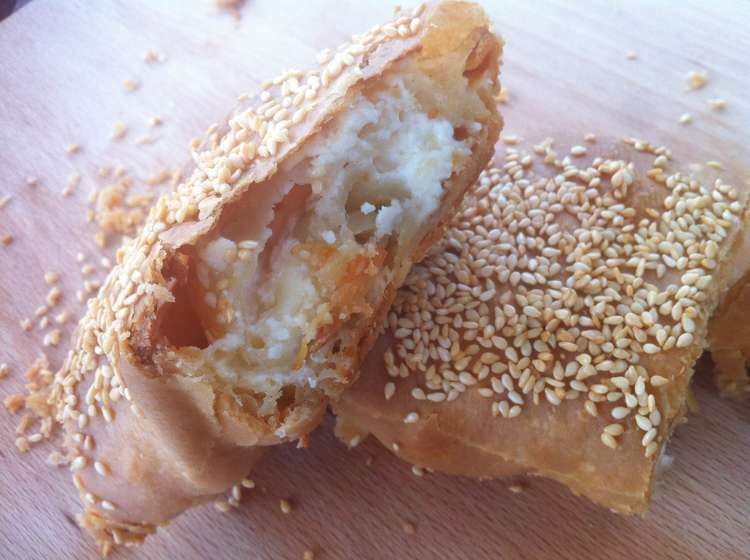
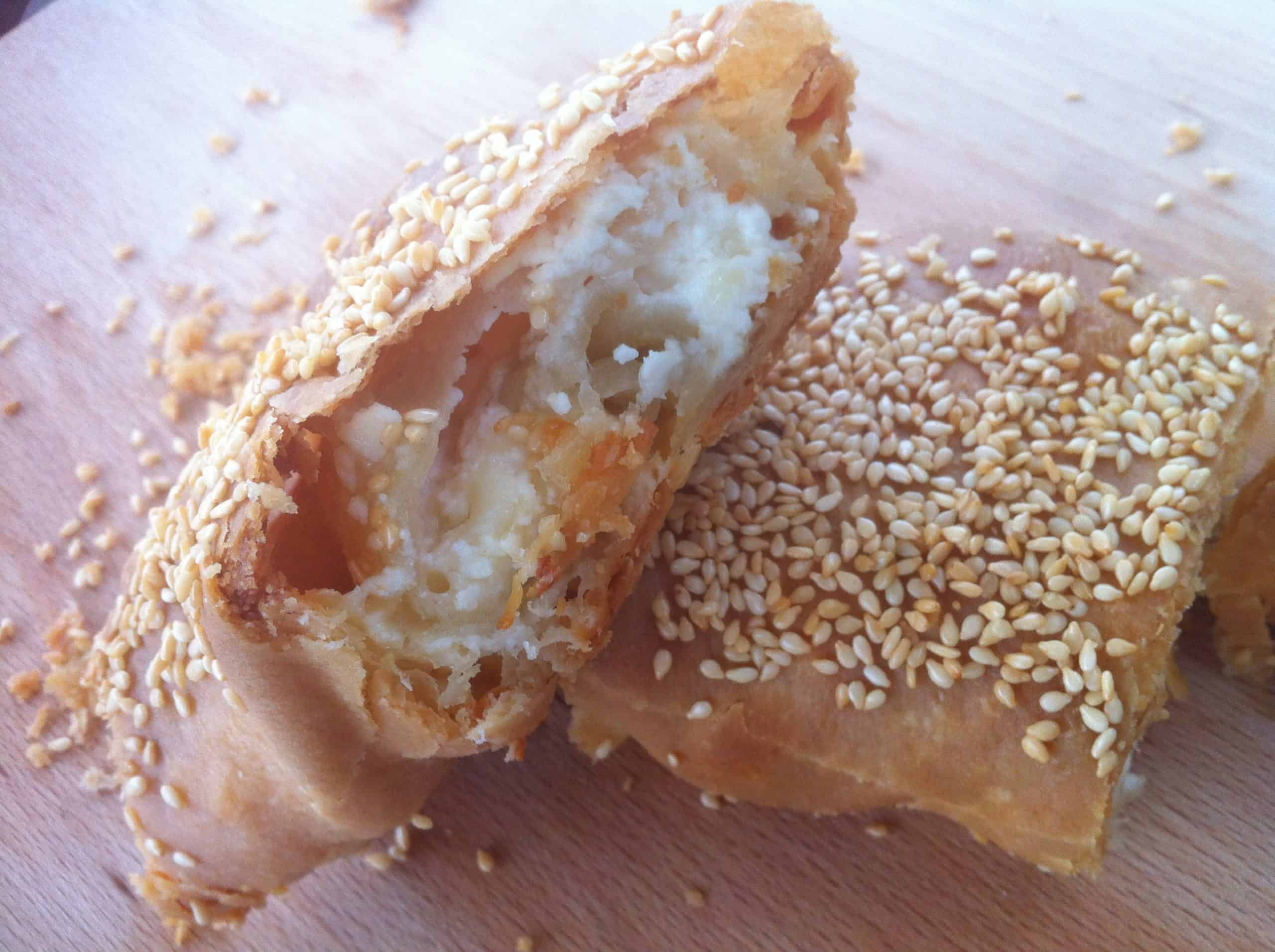
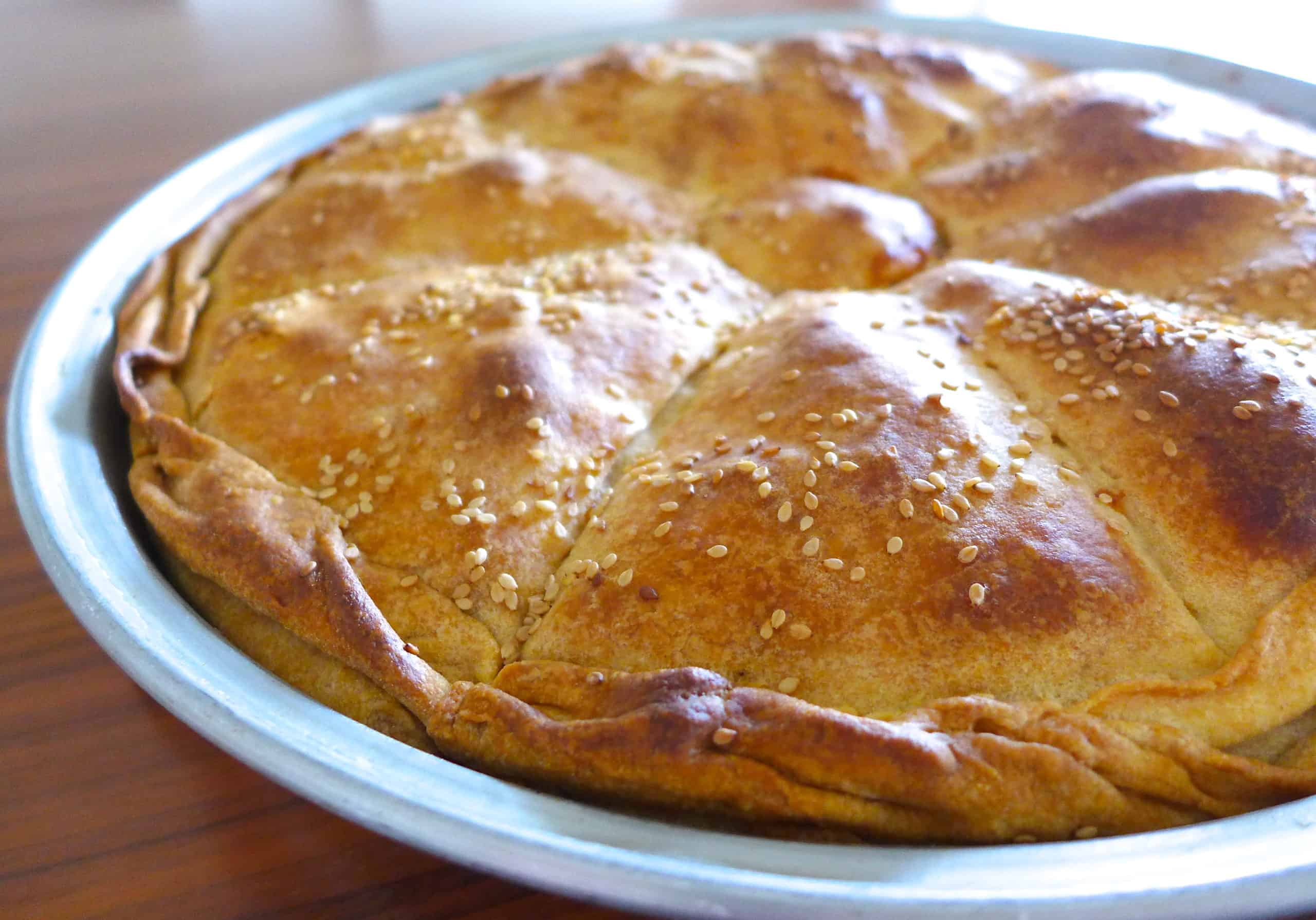
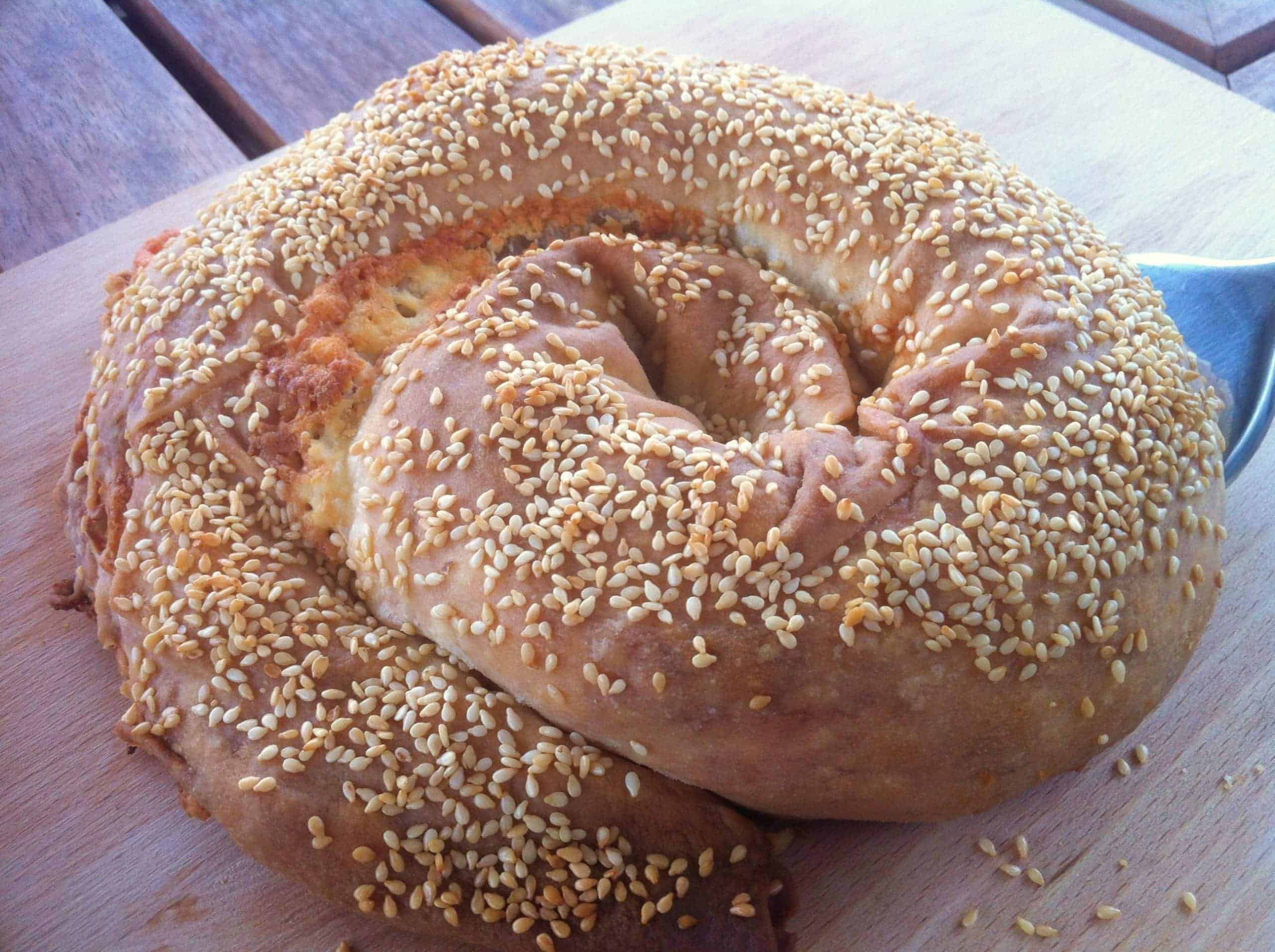
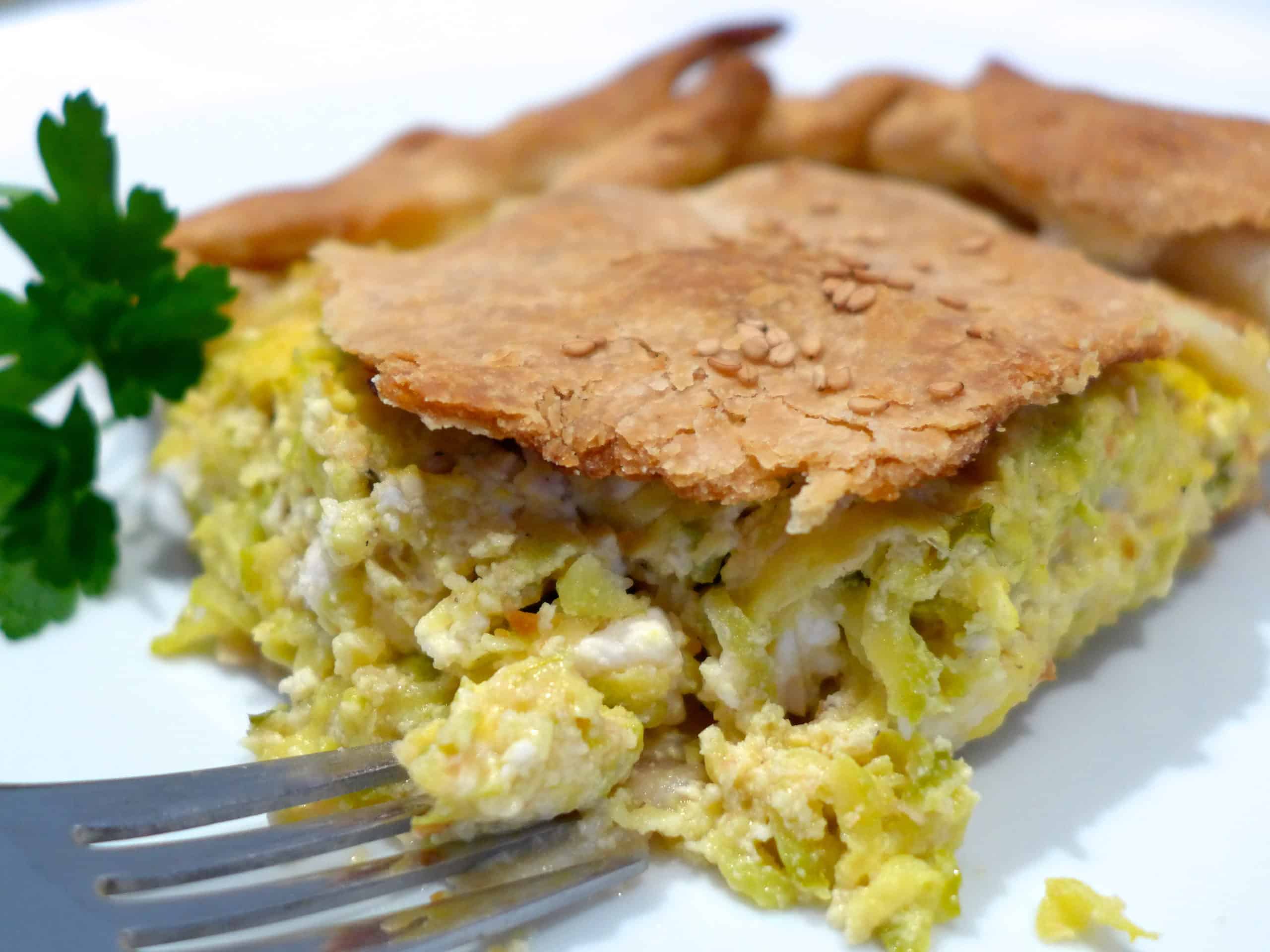
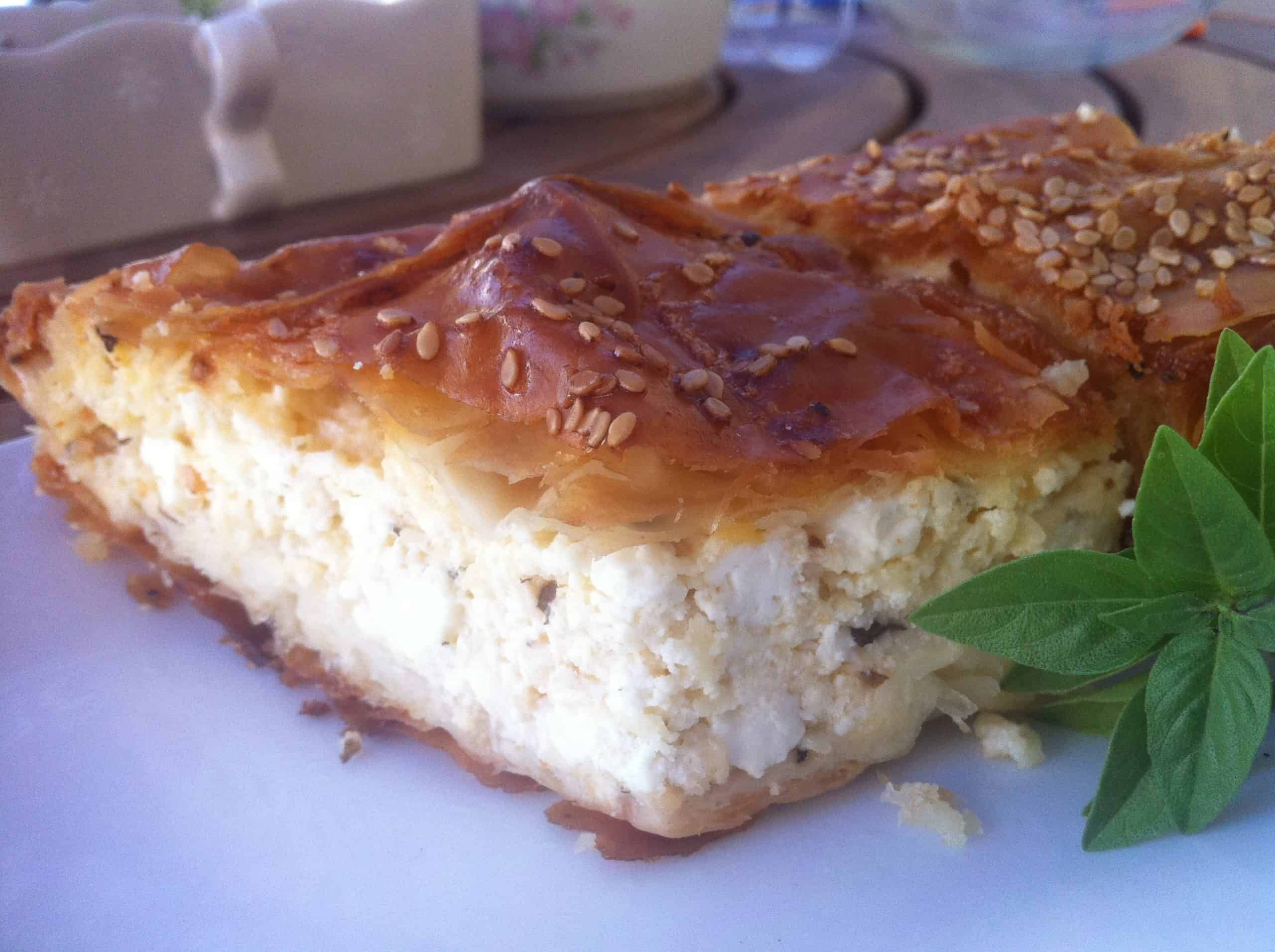

Some people add starch…. why?
I love uour recipe
Made this but had no idea how to layer this in the dish. My filling was greens and bell peppers. I put 3 on the bottom, added the filling, folded the edges on top of filling, then last 3 sheets on top brushing all sheets with olive oill. Taste was good but too much dough.
You can fix this in a couple of ways. Basically you need the filling to be more in proportion to the dough. With Phyllo I’ve found that if you have little filling just use smaller baking trays to allow for approx. 1 inch (2.5/3cm) of filling in the pie. Thatway the balance between crunchyness and stuffing is preserved, at least according to my taste 🙂
Love
Eli
Good recipe. But no, the vinegar does not ‘make the dough become crispy’. Cooking does that. Vinegar helps to break down the flour’s proteins/gluten which makes it easier to work wit. It makes it softer and easier to roll out, especially to roll out thinly.
Hi, can I make this with gluten free flour ?
You can but as you know gluten free flour will result in a more crumbly texture :)!
Can I use this dough to make baklava?
Hi Daniel
No this is the so called Horiatiko (village) phyllo. its mostly for savoury dishes like spinach pie, cheese pie and chicken pie as its a bit thicker than the crusty phyllo that is needed for Baklava.
Thank you for taking the time to share this with us
At what temperature do you bake the dough?
Hi Martha
Bake it at 170-180C / 340-350F for around 1 hour, depending on the filling and how much you’ve used 🙂 If it browns too quickly, cover with some foil to prevent the top from burning!
I was wondering if you know why the dough could become too tough and not flaky after baking? Could it be the time of handling the dough? Or the oven temperature? Thank you for the recipe.
Hi there! This phyllo dough is what is called “village dough” in Greece – it is more solid than the usual puff pastry and is perfect for wet fillings. if you want your dough to be more flakey then you’ll need to layer some olive oil and/or some butter when preparing it. Try opening the phyllo, spread your olive oil/butter then fold on itself and stretch again. This will make your dough puff up when baking.
I love your recipes 🙂 Thanks so much!!
Your welcome Maria 🙂
Instead of red wine vinegar, can you use another kind of vinegar? For example apple? And another question, can this phyllo recipe be used for making Greek bougatsa?
Thank you for well explained recipe.
Hi Vanja
Yeap you can play around with the vinegar – just dont use balsamic as it has a very intense and sweet flavour. I am afraid you can’t use this phyllo for bougatsa as that phyllo is more buttery, closer to the usual flaky phyllo pastry that you can buy at your supermarket. This phyllo recipe is what’s called “horiatoiko” or village phyllo and is perfect for pies!
By “strong” flour, do you mean semolina flour? Should I use all semolina flour or a combination of semolina and regular white flour? I’m looking forward to trying your recipe. Thanks!
Its bread flour, not semolina flour 🙂
Hi thanks for the recipe. Can you freeze this dough?
Hi Eli
Can you please give us a recipe for phyllo For Baklava and Boughatsa and crispy spanakopita like the store bought? Thank you in advance
Greetings from the UK!
My Phyllo came out really well over here, thank you for the recipe
I used to use the thin store Phyllo for my spanakopita, and when I went to Greece notice they have the more dough-ey version to buy… I love this version
So thought why not just make it myself and turned out super easy with your recipe 😊
This sounds so good! Thanks.
How hard is it to make this dough without a stand mixer?
No problem at all, I did it without the mixer.
Thank you so much, finally have found the perfect recipe!! Have made yours twice with fantastic results! Couple of tips that worked for me – letting dough rest overnight and baking fan forced heat on bottom for 1 hour